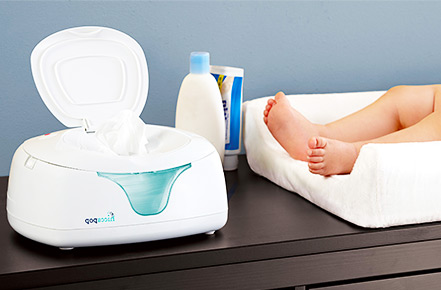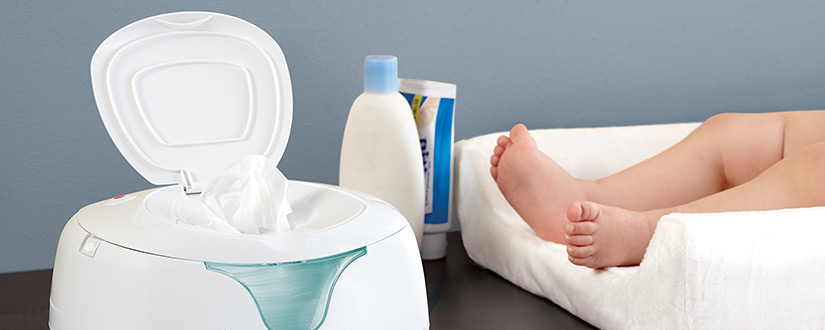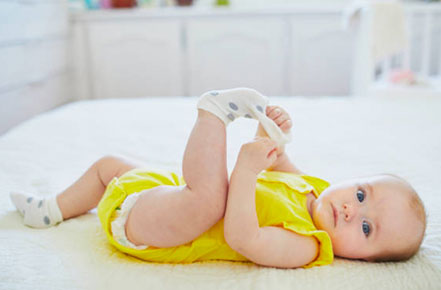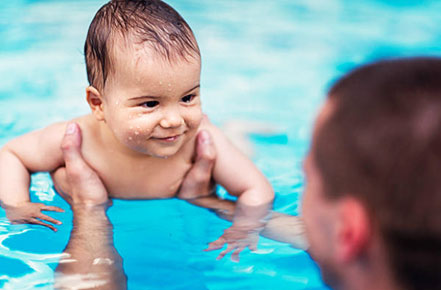Baby wipe warmer is a big lifesaver for toddlers who often react due to wipe issues. Babies are accustomed to staying in warmth, hence the drop in temperature causes quite a mess. Moreover, warm tissues are always better than cold ones – because the coldness induces bacterial growth. Often, the frequently asked question becomes – how to keep baby wipes warm and how to use a wipe warmer for this purpose?
How does a wet wipe warmer work?

Wipe warmer is a recent and perhaps one of the remarkable additions to the baby gear landscape. The bottom part of the baby wipe warmer has a pillow made of sponge that you need to add water to so that the tissues don’t dry out. The heating part is located in the portion of the lid. Fret not, the heating mechanism comes with all the safety precautions. Plug the warmer in the socket and wait for a while to warm it up.
Essential features of a wet wipe warmer
- Size: Decide on the size of the warmer according to the number of tissues. Keep in mind that baby wipes come in varying sizes.
- Heating properties: If you have a particular bracket of temperature in mind, browse according to that range.
- Kind of wipes it works with: There mainly are two kinds of wipes – disposable, and reusable. Disposable tissues have thinner sheets, whereas the reusable ones are made of thicker clothes for rewashing. In the case of homemade baby wipes, check their compatibility with the model.
- Extra features: Warmers have lighting tools that help the nighttime changing hassle-free. Also, moisture guard and bacteria control are two vital aspects. Some brands include a moisture guard system so that the tissues don’t get burnt or dried while being heated. On the other hand, too much wetness can induce bacterial growth which is harmful to the baby’s skin. Some warmers come with a UV light system that can eliminate bacterial growth.
How to use a wipe warmer?
- Step 1: Read through the baby wipes warmer instructions. Pick a flat; even surface that has enough ventilation, to place the warmer. Avoid putting it in a moist place. Also, no flammable materials should be near the device.
- Step 2: Open the lid, fill the reservoir with water until the marked line. Once filled, slide the reservoir in back in the main container. Press the spray pump until the water is released to test it out. Arrange and place the tissues properly. Make sure to maintain their original form of packaging, so that taking one out after others can be done neatly. Stick to the maximum capacity of the device to warm the tissues optimally.
- Step 3: Once the latch is released, pull the wipe up and out straight. Push the cover down to close it properly. Set a regular interval to clean the warmer. Cleaning it up ensures hygiene and eliminates the possibility of any bacterial growth. Descale the device once a month for seamless running.
Refilling a wet wipe warmer
Never forget to go through the wipe warmer instructions. While refilling the tissues, take any remaining ones out and place the fresh batch at the bottom. Put the old one on top to avoid it from getting burned. In the case of water refilling, each model has its own set of instructions. Follow them for a hassle-free experience.
Precautions for usage
While browsing through different models, you might wonder – are wipe warmers safe? If the instructions are rightly followed – yes.

- Add enough water to avoid the tissues from drying out, or worst – to have them converted into flaky paper sheets that can catch fire or be burnt easily.
- Do not wet the electrical cord, or leave the plug lying on a wet surface.
- Keep it in a moist-free, undulation-free space, out of children’s reach.
- Clean it up regularly to prevent bacterial growth.
FAQ
Do warmers dry out wipes?
If the wipe warmer is left turned on for a considerable period and tissues aren’t removed from it – there might be some drying, especially for the wipes that sit closer to the heating source.
Do wipe warmers cause bacteria growth?
Though a moist confined area can be the breeding ground for germs and bacteria, cleaning the device up regularly can eliminate the possibility of such problems. The temperature extremes can also cause fungal growth, so make sure the products are FDA approved. However, warmers often come with toxin-free preservatives to prevent the spread of microbes.
Do warmers cause diaper rash?
Diaper rash is caused by:
- Irritation from stool or urine, especially if the baby is in a wet or dirty diaper for too long.
- From using a new product, e.g. creams of any sort.
- Bacterial or yeast infections, rubbing, or use of antibiotics on sensitive skin.
However, warmers do not cause diaper rashes. The preservatives in these are used to keep the baby’s sensitive skin in mind. Still, if you notice rashes, consult a doctor immediately for the best diaper rash treatment.
Final Word

Although not extremely essential, baby warmers are found quite useful in households. If you live in a place that usually has a colder climate, these come in handy. You can always count on them in time for a quick diaper change – keeping your baby fuss-free. However, the safety precautions are a must while using the device, and if used by following the necessary instructions on how to use a wipe warmer – they run smoothly for a good period.











